Three Variations to Offer Customers Choices
Dodge lifted the covers this week on the eagerly awaited Charger Daytona. The replacement for the brand’s ancient muscle car line-up made its debut in concept form barely 18 months ago, billed as “the world’s first all-electric muscle car.” But Dodge offered up a few surprises during a media briefing on its newest entry.
The 2025 Dodge Charger Daytona will have multiple personalities, starting with an assortment of EV versions packaged in both two- and four-door body styles. And for those not quite ready to go all electric, the Dodge Charger coupe also will be offered with the new, high-performance Hurricane gas engine.

“Hidden in plain sight”
“This has been a long time in coming,” said Dodge brand boss Tim Kuniskis, as he introduced three of the many different versions of the new Charger set to reach market over the next 18 months or so. One might argue that the project has moved with lightning speed, taking less than three years from initial conception to the launch of production during the second half of this year.

The final version was “hidden in plain sight,” Kuniskis laughed, as the production model is all but identical to the wildly well received show car that made its debut in August 2022. Charger will come with essentially everything originally promised, including a variety of all-electric drive packages, the “Fratzonic Chambered Exhaust,” a shiftable transmission, the distinctive “R-Wing” front passthrough and more. Plenty more if you add the four-door package and the gas-powered model.
But there are some notable surprises. Unlike the skateboard-style “architecture” used by most new EVs, all versions of the new Charger ride on a “multi-energy” platform capable of handling both all-electric and gas-powered drivetrains. Now add the fact that there will be 2- and 4-door versions, as well.
Here’s a list of what to expect and when.
Second-half 2024
- Dodge Charger Daytona R/T 2-door will debut with the Stage I performance pack. That will give it 456 horsepower (hp) and 404 pound-feet (lb.-ft.) of torque. The PowerShot mode will boost that to 496 hp, enough to hit 60 in an estimated 4.7 seconds, with quarter-mile times of around 13.1 seconds;
- Dodge Charger Daytona Scat Pack 2-door will feature the Stage II performance pack. It makes 630 hp and 627 lb.-ft.,, jumping to 670 hp for up to 15 seconds in PowerShot mode. Estimated 0-60 times of around 3.3 seconds, and 11.5 seconds for the quarter-mile.
Early 2025
- Four-door versions of the Dodge Charger Daytona R/T and Scat Pack models will be added to the line-up;
- The gas-powered version of the muscle car will be added in both 2- and 4-door body styles. It drops the “Daytona” badge and will simply be known as the Dodge Charger. Full specs aren’t available but will share the new Hurricane I-6 engine with other Stellantis products, including the new Ram pickup. In “base” form it will deliver 420 hp. The twin-turbo package bumps that to 550 ponies.
Both versions of the Hurricane, noted Kuniskis, will be offered with an “option that produces better horsepower and torque numbers than the outgoing 5.7 and 6.4-liter Hemi engines.”
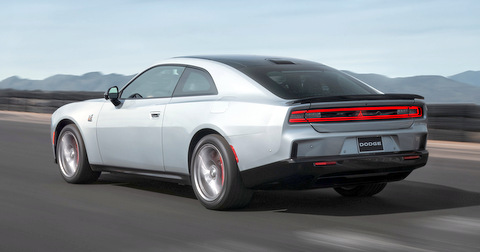
More to Come
The rollout will continue with the launch of the ultimate all-electric version, the Dodge Charger Daytona Banshee. It will be available in 2- and 4-door versions, as well. Specs are also TBA, but there’s widespread speculation the Banshee with the Stage III performance pack could push into the 1,000 hp range.
That would seem likely considering where other performance EVs, such as the new Lucid Air Sapphire and Tesla Model S Plaid are positioned. But it also might mean Banshee pushing past the $100,000 mark. So far, we’ve heard nothing on final pricing for any of the new Charger models.
More Powertrain Details
The PowerShot mode–activated by a button on the steering wheel–isn’t entirely new. Dodge already features it on the small Hornet SUV. It provides a boost of up to 40 hp on the Daytona R/T and Scat Pack models for a maximum 15 seconds. You have to wait 30 seconds before it can be activated again.
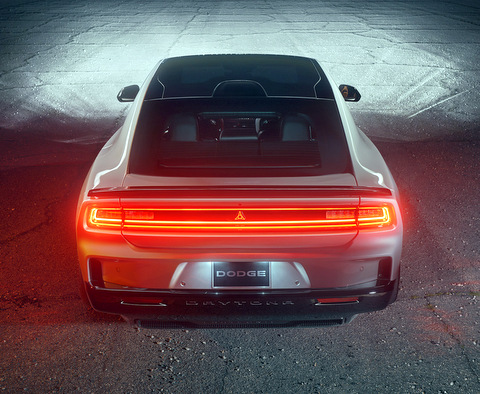
Dodge made headlines when it rolled out an all-wheel-drive version of the Challenger for 2017. With all new Charger models–electric and gas–all-wheel-drive will be the norm. That said, the Daytona packages will allow you to use the various mode settings–including “Donut” and “Drift”–to push most of the power out of the back end. And the gas model will be able to br shifted entirely into rear-wheel-drive.
As with most of today’s EVs, the R/T and Scat Pack models will use single-speed transmissions. But for those who might miss the ability to row their own, they will allow for simulated manual shifts. The Banshee, meanwhile, will go with a two-speed gearbox and additional simulated shift points. The Hurricane-powered Charger will feature an 8-speed automatic.
Based on what we’ve seen–and heard–with initial Stellantis products using the Hurricane I-6, we can expect the Dodge Charger to feature a classic muscle car exhaust note that should help alleviate any disappointment muscle car fans might have over the loss of the classic Dodge Hemi V-8.
Fratzonic Exhaust
What could prove the real shocker, however, will be the Fratzonic Chambered Exhaust used on the Daytona EVs. And, yes, they’re calling it an “exhaust.” The system uses two passive “radiators,” which are designed to create “Hellcat levels of sound,” Dodge noted in a background release.
“Sound intensity is tied to higher performance, with a stealth sound mode also available,” it explained. “Distinct vehicle sounds assist in providing driver feedback, especially at the track and at elevated speeds, and enhance the immersive in-car feel.”
Performance Upgrades
What would a muscle car be if you couldn’t upgrade performance? Keen-eyed readers will have noted that the initial version of the R/T features the “Stage I” package, the Scat Pack getting a “Stage II” pack.
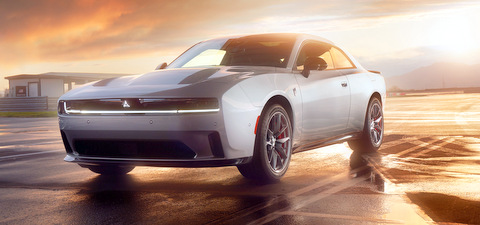
Effectively, there will be nine performance packages available by the time the full EV line-up reaches showrooms, three each for R/T, Scat Pack and Banshee. Dodge officials aren’t saying much about the upgrades but, at the very least, they will boost power and may make changes to other onboard digital systems.
Whether there will be hardware upgrades available, as well, is uncertain, at least for the Daytona EVs. But expect the usual assortment of factory and aftermarket upgrades for the Hurricane engine models.
In a curious move, Dodge chief Kunishis said the various Stage upgrades will not be offered through over-the-air-updates–as Tesla has done with some products to boost performance. Owners will have to go to dealers for installation. Smartphone-style OTA technology is becoming something of a “commodity.” He wants these upgrades to be seen as something special, as it is today when you make upgrades to the old Charger’s drivetrain.
Batteries
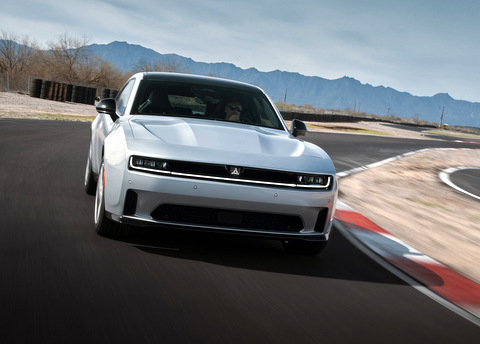
All of the electric Charger Daytona models will be fitted with 100.5 kilowatt-hour (kWh) lithium-ion batteries – of which 93.9 kWh is usable energy. Range is an EPA-estimated 317 miles on the Daytona R/T, and 260 on the Scat Pack. Of course, those numbers will drop fast if you spend a lot of time with your right foot nailed to the floorboards.
The initial Charger Daytona R/T and Scat Pack models will use 400-volt electrical architectures capable of going from a 5% to 80% state-of-charge using a 240-volt Level 2 charger in just under 7 hours. Going from 20-80% SoC with a 175 kW DC public charger will take an estimated 41.9 minutes, while that drops to 27.6 minutes when plugged into a 350 kW charger–currently the most powerful in use.
To maximize the performance of the Banshee package, Dodge will migrate to an 800-volt electric system. At its most basic, the higher the voltage, the more efficient the system. That can be read two ways that matter most: improved range and higher performance, since the power control technology can move energy into and out of the battery pack much more quickly.
Exterior Design
As Kuniskis noted, the new Dodge Charger and Charger Daytona don’t stray far from the 2022 concept version. If anything, they carry over some of the features wildly expected to go away in production.
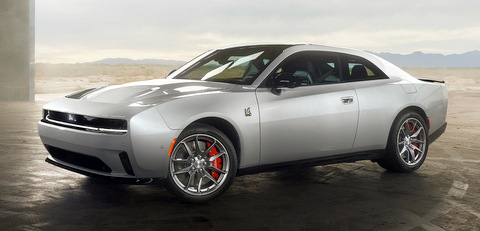
That starts with the R-Wing passthrough up front. Reminiscent of the legendary Hemi-powered Charger Daytona model’s extended nose, it’s used here on the EV models (but not on the Hurricane package) for a variety of aerodynamic reasons, reducing drag even while enhancing downforce on the front wheels.
The new Chargers get their biggest wheels and tires yet: 20-inch wheels and staggered Goodyear Eagle F1 SuperCar 3 305s up front, 325s in the rear.
(They barely conceal the largest brake package ever offered on a Dodge vehicle: 16-inch Brembos with vented rotors. They are six-piston designs up front, four in the rear. As with all modern EVs, the Dodge EVs use a blended braking strategy that recaptures as much energy as possible to return to the battery. A “Brake by Wire eBoost” system determines the best braking strategy.)
LED lighting up front includes a cross-grille lightbar. In back, the Charger’s pick up on the familiar Dodge “racetrack” lighting theme.
Another carry-over from the Charger Daytona SRT concept: the triangular Fratzonic logo that replaces the more familiar Dodge design.
Interior Design
Whether 2-door or 4-, gas or EV, all versions of the new Dodge Charger share a common interior that boasts plenty of attitude. The layout is horizontal, enhancing the broad stance of the new muscle car family.
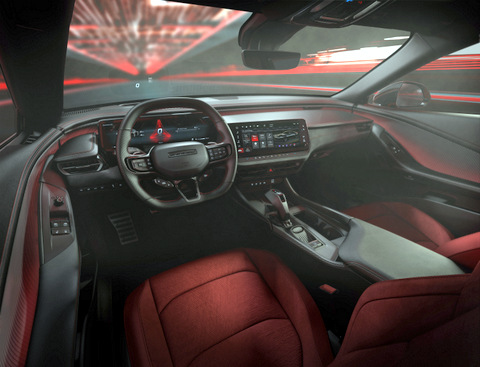
“Attitude Adjustment Lights” wrap around the cabin and can be set to any of 64 different colors. And the lighting adjusts to various “vehicle events,” Dodge notes, such as opening the doors or starting the car up.
A variety of controls, as well as the new pistol grip shifter, are mounted on the new center console. One thing that may take by surprise those familiar with modern EVs: because the new Charger uses a “multi-energy” platform–meaning gas and electric–it does not have a flat load floor. It still manages to squeeze in a maximum 38.5 cubic feet of rear cargo space, a full one-third more than the outgoing Charger. And there’s a modest, 1.5 cubic-foot frunk, or front trunk.
Onboard Technology
Emphasizing the high-tech nature of the new Charger line, the IP is anchored by a 10.25-inch instrument cluster–with a 16-inch display available. A 12.3-inch touchscreen serves infotainment duties. A large, full-color head-up display also is available.
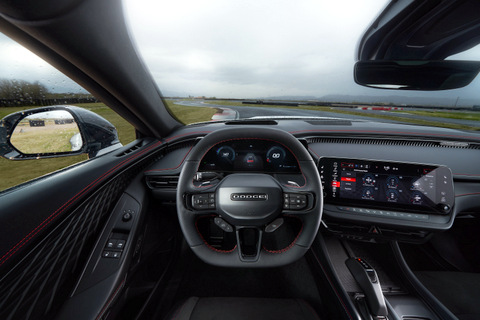
The latest Android Uconnect system features upgraded mapping that will help a motorist plot out a route including charging stops. And Dodge’s parent, Stellantis, recently inked a deal that will soon begin allowing owners to plug in at Tesla Superchargers, as well as other public EV charging stations.
The system has built-in Amazon Alexa functionality, as well as wireless versions of Apple CarPlay and Android Auto.
Motorists will be able to use their smartphone as a digital key – and share that function with other users. They’ll also be able to use a credit card-sized NFC card.
The Charger family will be offered with a new “Drive Experience Recorder” which can be used to record the vehicle’s performance while racing. The results can be viewed in the car or sent to a computer or other digital device.
Among other features, Scat Pack model with optional Track Package (and later, the Banshee) will be offered with a dual-valve, semi-active suspension. The system is designed to tighten up on track while offering a more compliant ride during everyday driving.
What’s Ahead
We’ll have to wait to find out pricing for the new Dodge Charger family, as well as specs for the Banshee and Hurricane-power models.
We’ll also be looking to find out more about how Dodge–and its parent–will use the underlying multi-energy STLA Large platform found in the Charger line-up, both gas and electric. According to Kuniskis, it eventually could underpin “a third” of future Stellantis models sold in North America.
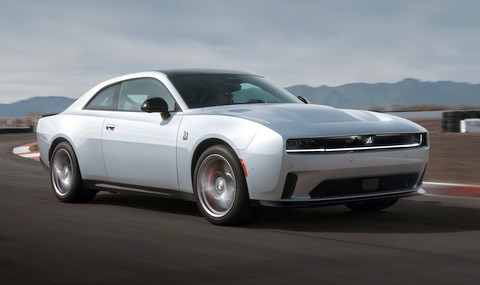
Another unanswered question: will the new Charger family get the latest Stellantis hands-free driving assist technology. “TBD,” said Kuniskis, though he acknowledged, “I think early adopters will be very excited about this technology.
Might Dodge add still more powertrain options, such as a plug-in hybrid–which many analysts expect will be the “bridge” technology for those still not ready to go 100% electric? “Anything’s possible,” said Charger chief engineer Audrey Moore. Well, maybe not. Dodge officials firmly ruled out using a range extender along the lines of what’s in the upcoming Ram 1500 Ramcharger.
The exec also left one other hot topic unanswered: with the new Charger to be offered in both 2- and 4-door configurations, will there be any future for the old Dodge Challenger badge? Apparently, nothing is yet in the works, the exec added, but he did offer a hint–it’s not gone for good. “We own the Challenger nameplate. I don’t know what we’ll do with it.”
This story originally appeared in Headlight News.
Photos courtesy of Dodge.

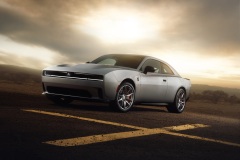
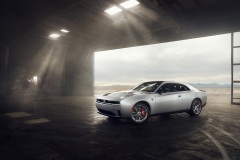
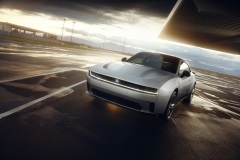

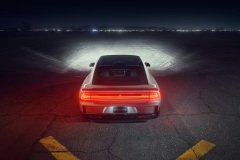
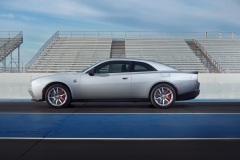
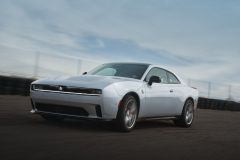
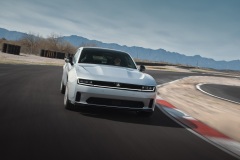

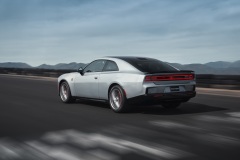
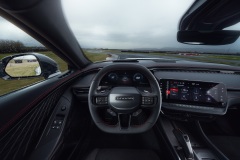

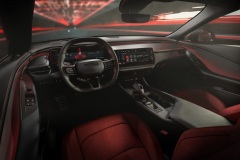

2 thoughts on “News: 2025 Dodge Charger Daytona EV Gets a Gas-Powered Sibling”